Adding coffee back into my diet once I realized that histamines were at the root of my issues was a challenge, to say the least. There were four main elements to content with, and I went through each one individually before declaring that I'd figured out the perfect low histamine latte recipe.
Firstly, I had to sort out the relationship between coffee and histamines in the first place, and how & where to buy the most histamine-friendly coffee beans. Once I tried Purity Coffee, I never really looked back, so that first issue was handled.
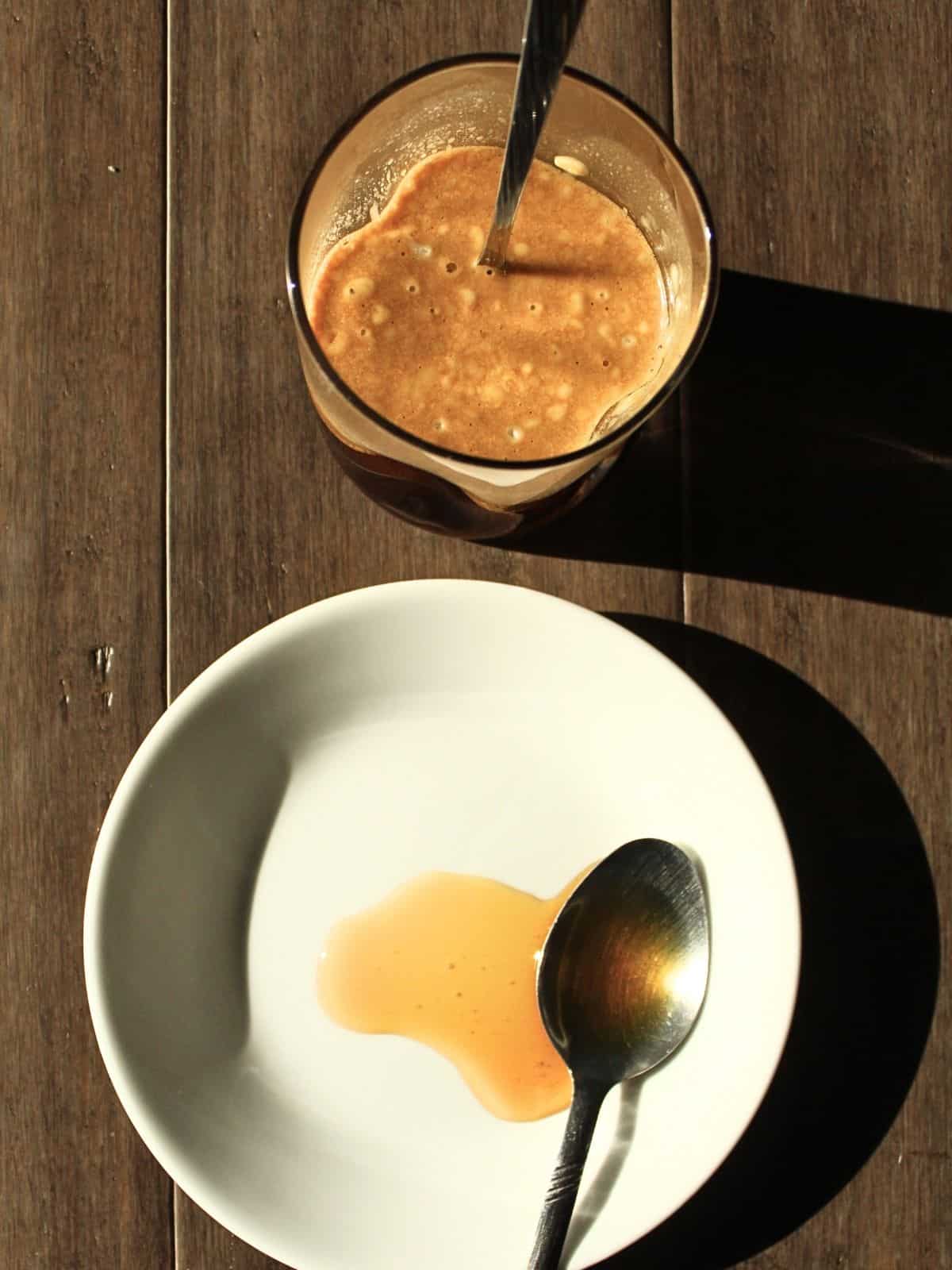
Jump To
Brewing Low Histamine Coffees
Then I needed a method of brewing coffee that recreated the espresso-based beverages I crave. It also had to be simple enough for me to make every day, because for me, coffee represents normalcy and daily indulgence. For that reason, this recipe utilizes a Moka Pot, my favorite way to make thick, espresso-like coffee from the moderate comfort of my couch.
You can also use a Pour-Over, a French Press, or even a Vietnamese Drip Coffee Maker. I've used all of the above, but the deep flavor and thickness of the Moka Pot has kept me loyal (though the Vietnamese maker is a pretty close second). Plus, the one I use at home only costs $5USD, and it's lasted me many months of daily brewing, so you don't have to shell out much for a fancy brewing machine.
You may even recognize moka pots from their modern popularity in the Caribbean and Italy, where they're used in homes and restaurants throughout the region. I've personally seen moka pots still being used daily 10+ years after purchase, so I'm excited to see how mine fares over the years. But most importantly, it makes a mean cup of joe.

Finding Low Histamine Milks (Creamers)
The next issue to contend with is milk. I can't tolerate dairy, like most HIT sufferers, so I turned to a few other milk alternatives before settling on coconut milk, and more specifically coconut milk powder. Once I settled on coconut, I tried three different coconut milk powders, and this one was by far the best.
It stays suspended in the liquid and doesn't separate for at least 10 minutes (my coffee doesn't last much longer than that!), and it tastes inherently much sweeter than the other two.
I also found that even a 2% inclusion of starches will keep the powder from clumping, sure, but it also stops it from staying blended into a liquid. If your system is very sensitive, that starch could also trigger a histamine response.
Note that coconut milk powder and coconut cream powder are two very different things, as is coconut flour. Remember to always buy coconut milk powder, especially when making warm beverages like coffee and tea.
This low histamine latte recipe takes advantage of the unique thickening powers of pure coconut milk, and our mind's association of vanilla with sweetness. As for the sweeteners, sugar tends to mess with your blood sugar levels, which can stimulate histamine release.
Most coconut milk latte recipes use refined sugar to get that Starbucks flavor, but I don't like to risk my health any more. For this reason, I stick with a blend of coconut sugar and monk fruit extract or a teaspoon of honey.
Remember, always buy organic, even for something as small as vanilla powder or coconut sugar, and certainly for something as integral as coffee beans. As always, consult a doctor before making any large dietary changes, even as small as adding (back in) a cup of coffee.
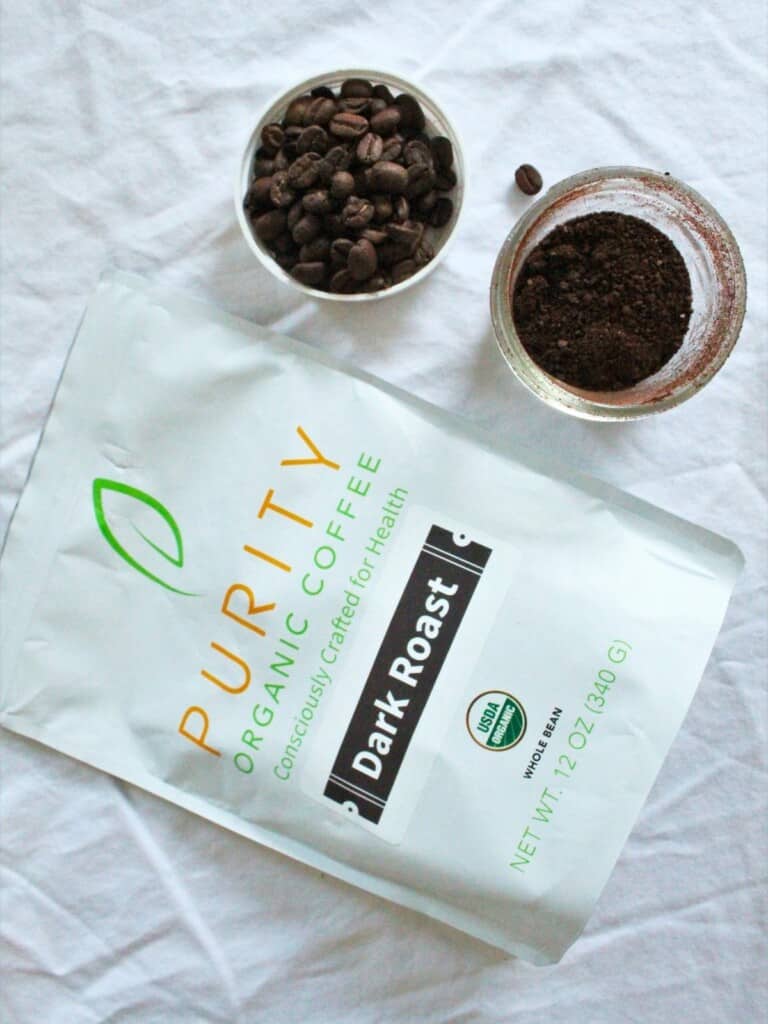
About this recipe
Versatile Enough For Iced Coffee: To make a low histamine iced coffee, follow the same process as below, except stick your moka pot into the freezer for a full 5 minutes after you've poured out enough to reconstitute your coconut milk.
Pour the flash-cooled coffee over ice and then spoon on your coconut milk & enjoy. Just don't keep it in the freezer any longer than 10 minutes, as it can start to affect the flavor of the coffee, and begin the buildup of histamines in your coconut milk.
Making Stronger/Weaker Coffees: The amount of ground coffee you use will vary depending upon which size of moka pot you use. The "cups" mentioned in the size of the device are actually for tiny 2 oz. espresso cups, like you'd find at the many roadside cafes in Cuba or the Dominican Republic.
For my afternoon cuppa, I use the 3-cup, because it make about 6 oz. of strong coffee for me to blend my coconut milk powder into. Add or remove about a half tablespoon to further strengthen or weaken your brew, but make sure the filter is pretty full and not really tightly packed, as that will affect the pot's ability to filter.
Ingredients
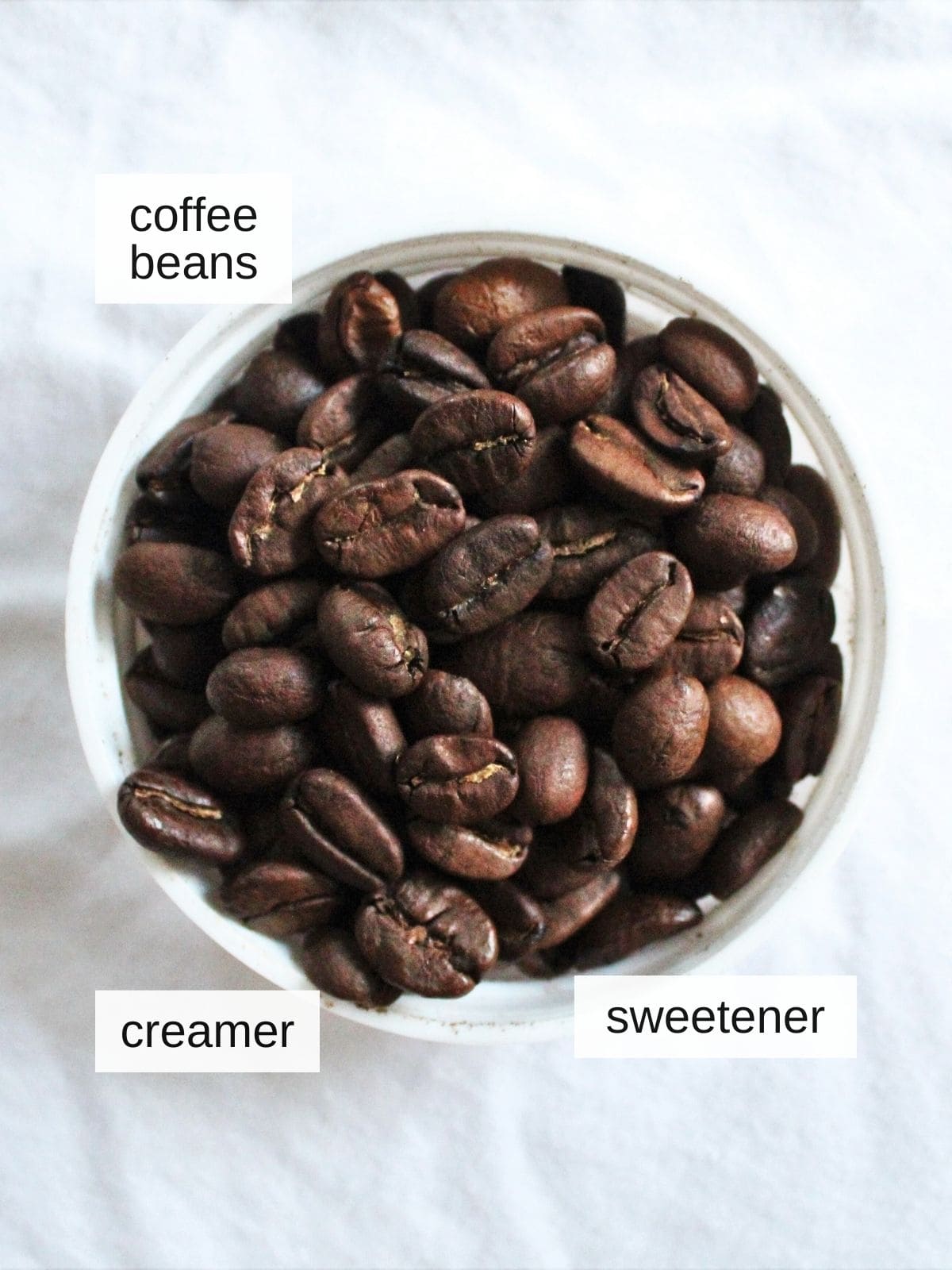
Organic Mold-Free Coffee Beans: I like to use Purity Coffee, usually decaf, but there are a multitude of lower-acid, mold-free coffees available these days.
Dairy-Free Creamer: you can use any sort of fat source you'd like to add a creamy component to your coffee. Just note that the whipping portion of this recipe may not work as well with dairy milk alternatives other than coconut, due to the fat content difference.
Sweetener of Choice: there are a lot of sweeteners you could use in coffee, but by far my favorite is manuka honey. Not only is it great for the digestive system, but manuka honey has been proven to lessen allergy symptoms, like those of histamine intolerance. If you don't like or haven't yet reintroduced honey, you can also use a blend of monk fruit and coconut sugar.
How to make low histamine coffee: step-by-step instructions
Step 1. Fill the bottom of your moka pot of choice with water, just to the bottom of where the filter will go in. Put the filter into your moka pot and pour out any excess liquid, until there's very little or no liquid showing in the filter.
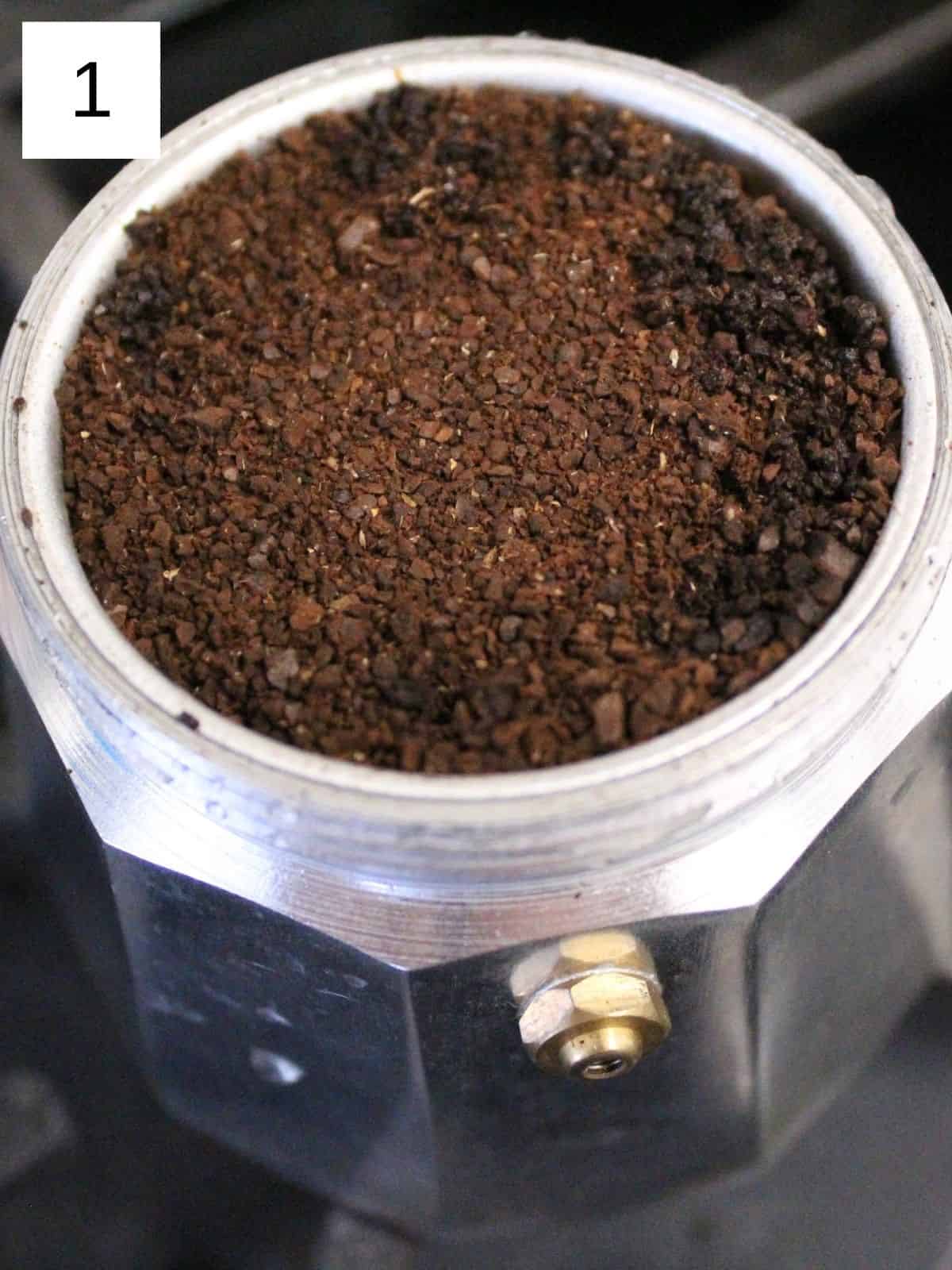
Step 2. Grind your coffee beans fresh (or take the pre-ground coffee out of your freezer), and fill the filter to the top, flattening the grinds so that it's not overfilled, but not pressing down the grinds.
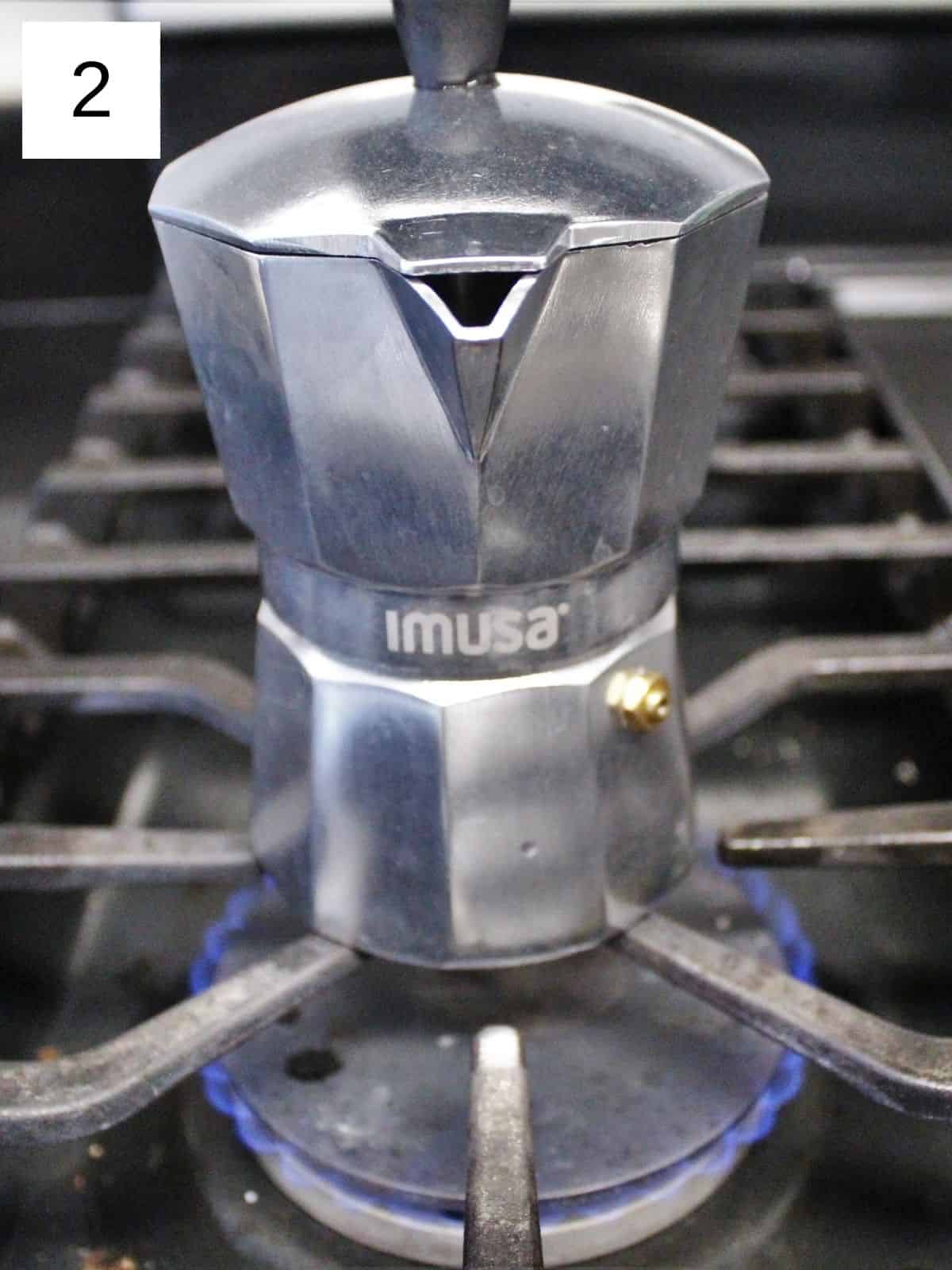
Step 3. Screw on the lid to your pot and then put it on top of your burner. Boil your coffee for 3-5 minutes on very low, until the coffee begins bubbling up from the bottom of the device, through the holes in the center of the top portion. My burners go from 1-9 in strength, and I always put my moka pot on 2; any higher, and the coffee doesn't have enough time to brew before the water boils over, so the coffee ends up too weak. Any lower, and it never boils, or way over-brews.

Step 4. While your coffee is brewing on the stove top, measure out your other ingredients: 4 heaping spoons of coconut milk powder, a pinch of vanilla powder, and a small spoonful of sweetener. If you want to use a hand blender to mix up a fancy, fluffy topping for your black coffee, make sure you choose a very sturdy mug with tall sides.
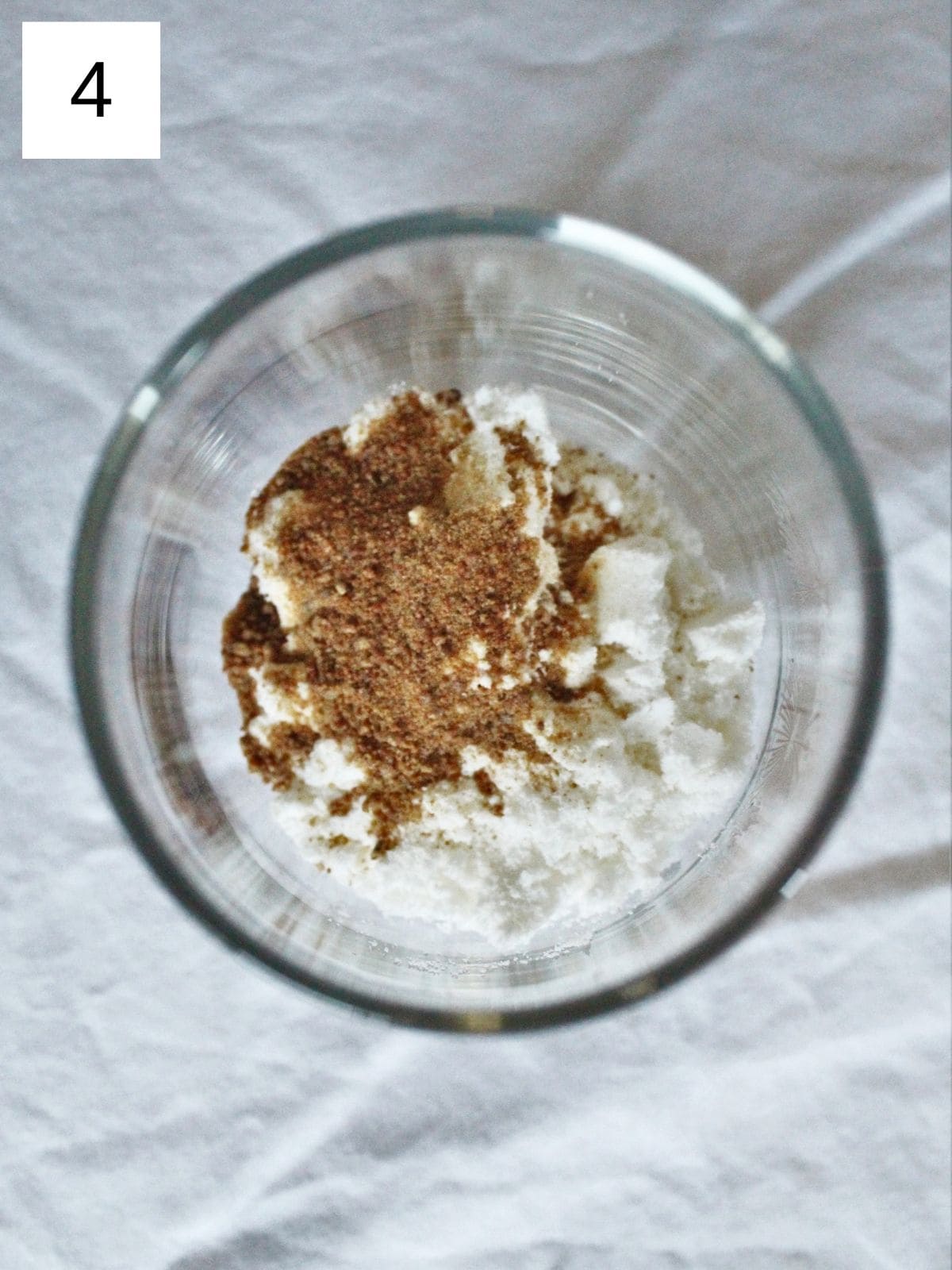
Step 5. Since this is your drink, don't be afraid to use more or less coconut milk powder and sweetener in your latte. I like moderate sweetness and a lot of cream, as in a past life I added a hearty dash of heavy cream to espresso for my afternoon coffee. Experiment. Enjoy.
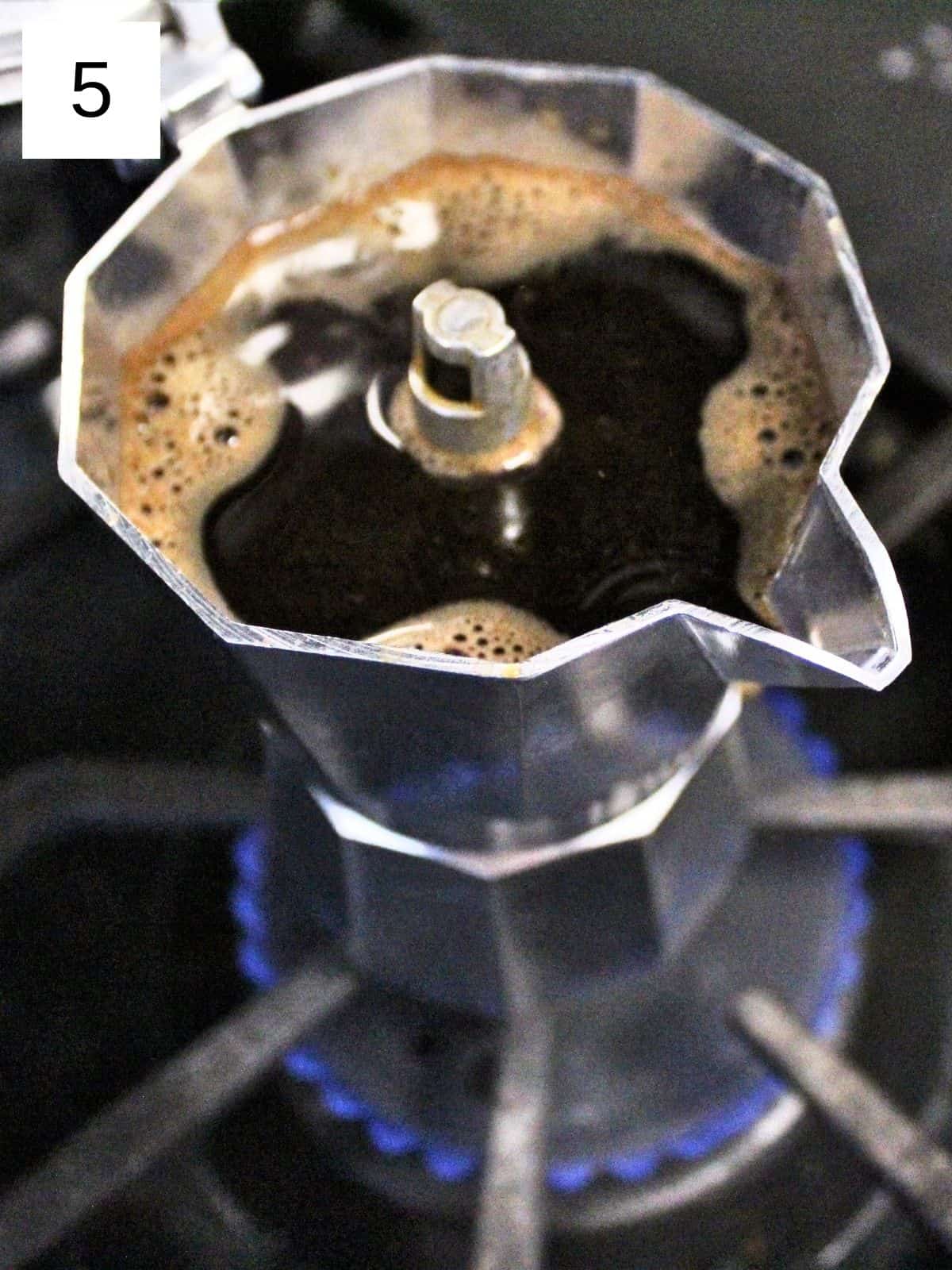
Step 6. Once your coffee is all brewed, add just an ounce or so of it to the ingredients in your mug. Mix them up with a spoon to reconstitute the coconut milk, or mix it all up with the hand blender on high for about a minute, until the mixture is thick and whipped, like dairy cream.
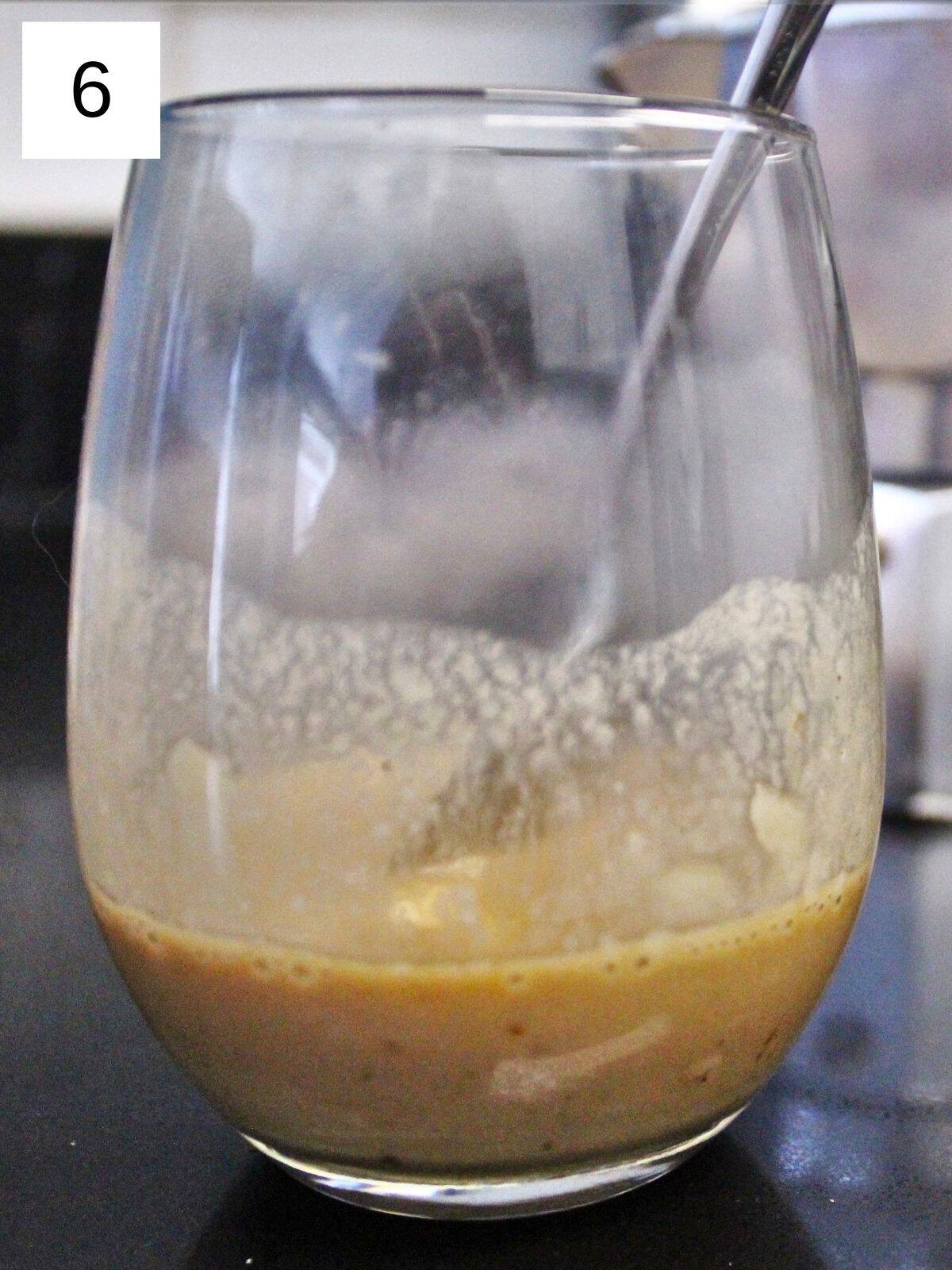
Step 7. Slowly pour the rest of your coffee into the cup, being careful of the last couple teaspoons, most of which will probably contain coffee grounds that made it through the filter. If you want to keep the cream thick and fluffy on the top, be sure to touch the spout of the moka pot to the mug itself, and pour the coffee down the side, like pouring a beer you don't want to foam.
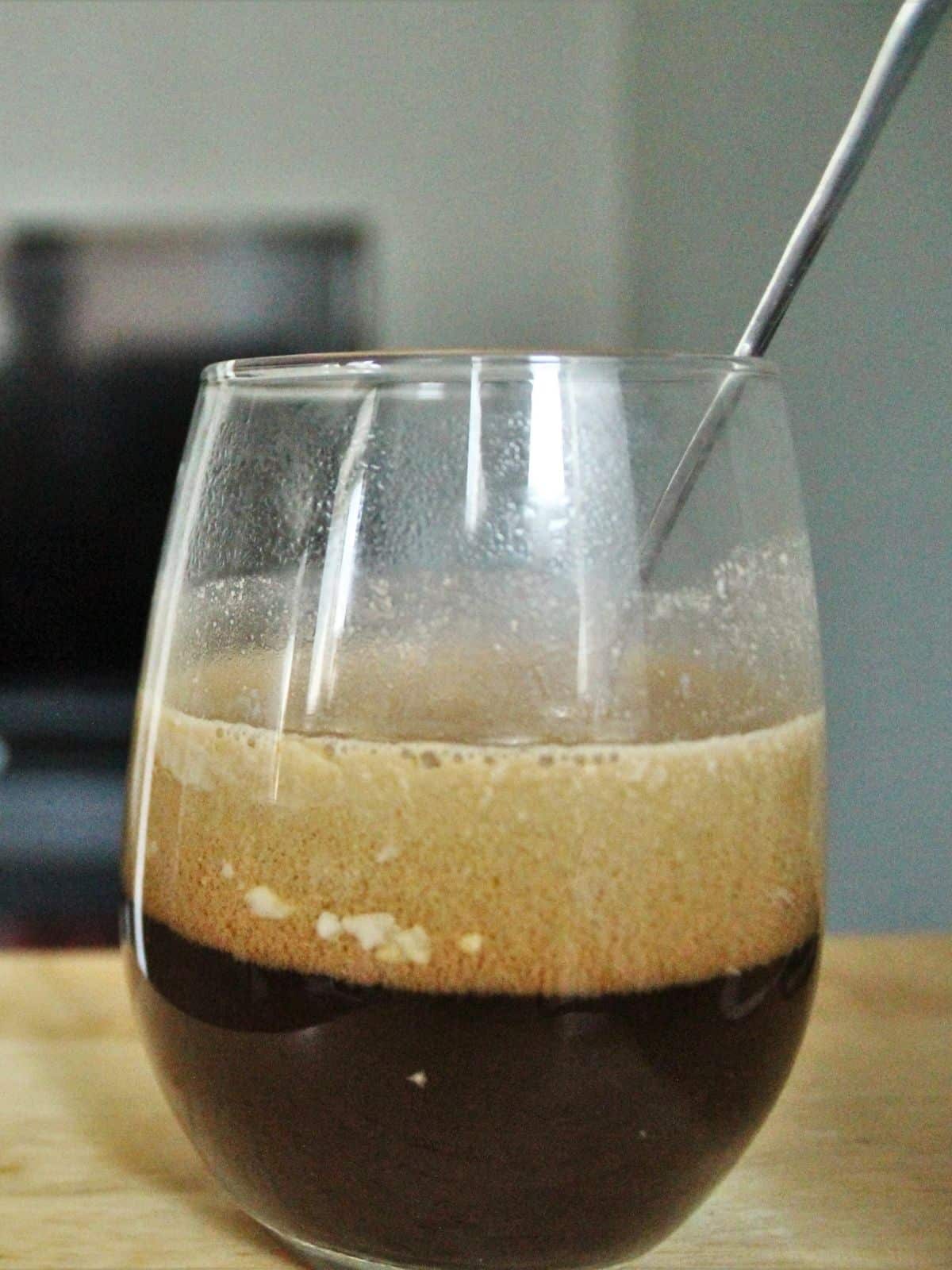
Recipe notes & tips
Using Liquid Sweeteners: If you choose to use a liquid sweetener like honey or date syrup, the process is the same, though you may want to use even less than you would if you're using the coconut sugar-monk fruit blend. Also, I like to have my manuka honey on the side of my latte, but that's not for everyone; just keep in mind how you normally like to take coffee, as this is your new normal! Other than manuka honey and my coconut sugar-monk fruit blend, some histamine friendly sweeteners include date syrup and date sugar.
Using Liquid Coconut Milk: While you can certainly use coconut milk from a can to recreate this latte, remember that the overall coffee flavor won't be as strong, and it's very difficult to find preservative-free canned coconut milks. Make sure you buy a guar gum-free brand, like the one from Native Forest.
Using Other Milk Alternatives: Theoretically you could also make this with a dairy milk or cream, but it's not ideal. While dairy isn't inherently very inflammatory, as most people with histamine intolerance don't do well with dairy (myself included). Some alternative milk powder options include oat and almond milks, but be sure that you buy a high-fat version for the creaminess factor.
Unfortunately, the more common dairy alternatives of soy, pea protein, and cashew milk are all very inflammatory and could easily set off a reaction. Flax seed-based milks are also often blended with pea protein, making them off-diet, as well.
Low Histamine Latte Recipe Card
As always, if you like the recipe, I really appreciate a review or comment!
📖 Recipe

Easy Coconut Milk Coffee (Dairy-Free Latte)
Ingredients
- ~6 oz. water
- ~3 tablespoon ground coffee
- ~4 tablespoon coconut milk powder
- pinch of vanilla powder
- dash of sweetener of choice (I like to use a blend of coconut sugar & pure monk fruit extract, though lately I've been using a couple teaspoons of Manuka honey. If monk fruit doesn't have an aftertaste for you, a tiny pinch of pure monk fruit works handily.)
Instructions
- Fill the bottom of your moka pot of choice with water, just to the bottom of where the filter will go in.
- Put the filter into your moka pot and pour out any excess liquid, until there's very little or no liquid showing in the filter.
- Grind your coffee beans fresh (or take the pre-ground coffee out of your freezer), and fill the filter to the top, flattening the grinds so that it's not overfilled, but not pressing down the grinds.
- Screw on the lid to your pot and then put it on top of your burner. Boil your coffee for 3-5 minutes on very low, until the coffee begins bubbling up from the bottom of the device, through the holes in the center of the top portion. My burners go from 1-9 in strength, and I always put my moka pot on 2; any higher, and the coffee doesn't have enough time to brew before the water boils over, so the coffee ends up too weak. Any lower, and it never boils, or way over-brews.
- While your coffee is brewing on the stove top, measure out your other ingredients: 4 heaping spoons of coconut milk powder, a pinch of vanilla powder, and a small spoonful of sweetener. If you want to use a hand blender to mix up a fancy, fluffy topping for your black coffee, make sure you choose a very sturdy mug with tall sides.
- Since this is your drink, don't be afraid to use more or less coconut milk powder and sweetener in your latte. I like moderate sweetness and a lot of cream, as in a past life I added a hearty dash of heavy cream to espresso for my afternoon coffee. Experiment. Enjoy.
- Once your coffee is all brewed, add just an ounce or so of it to the ingredients in your mug. Mix them up with a spoon to reconstitute the coconut milk, or mix it all up with the hand blender on high for about a minute, until the mixture is thick and whipped, like dairy cream.
- Slowly pour the rest of your coffee into the cup, being careful of the last couple teaspoons, most of which will probably contain coffee grounds that made it through the filter. If you want to keep the cream thick and fluffy on the top, be sure to touch the spout of the moka pot to the mug itself, and pour the coffee down the side, like pouring a beer you don't want to foam.
Notes
Nutrition
Save this post for later!















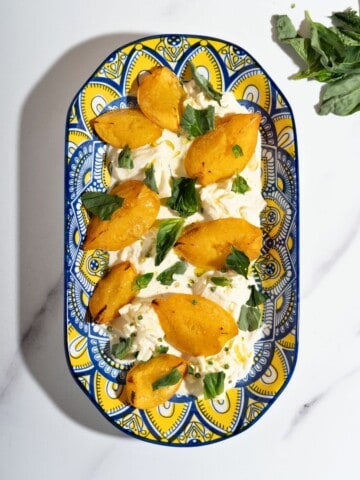
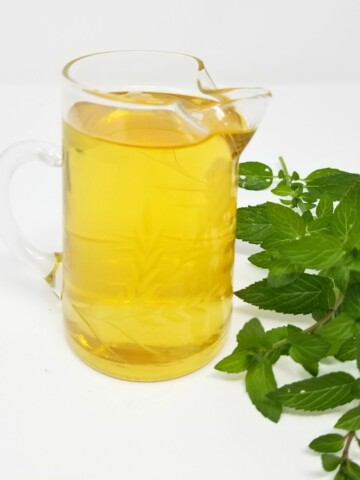

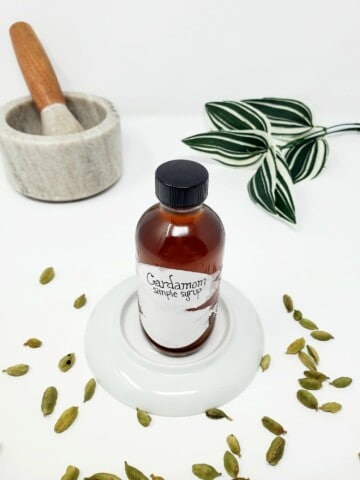
Sandy says
Hi Max! Thanks for all the great info and recipes! I was wondering if this method (using the moka pot) lowers the histamine levels of coffee? Thx.
Max says
My pleasure, Sandy! This method is a great way of getting a quick strong coffee, which can prevent the buildup of histamine in a standing drink like coffee, but the main issues with coffee are mold and caffeine, so it's more about the beans than the brew method in the end. 🙂
Brendan McDonell says
I have been using coconut kefir yogurt to make coffee. I didn't know it was high in histamines. It is quite yummy, no sweetener I actually add a little salt which may sound weird. Has anyone else added salt? No wonder I am having problems, the coconut kefir will have to go. So I will definitely give this recipe a try.
Max says
Salt in coffee is delicious! I hope you enjoy it, and I really hope the diet change makes a difference for you!
Indir says
Way cool! A very valid choice to use coconut, but I also love almond milk since I'm trying to do paleo at the same time! I appreciate you penning this post and the rest of the site is very good.
lowhistamineeats says
Thanks, Indir! I'm glad you like it and that you've found a milk that works for you!